 View of Gunpowder Neck, the future location of Edgewood Arsenal, before the start of construction. (National Archives, photo no. 111-SC-60481)
View of Gunpowder Neck, the future location of Edgewood Arsenal, before the start of construction. (National Archives, photo no. 111-SC-60481)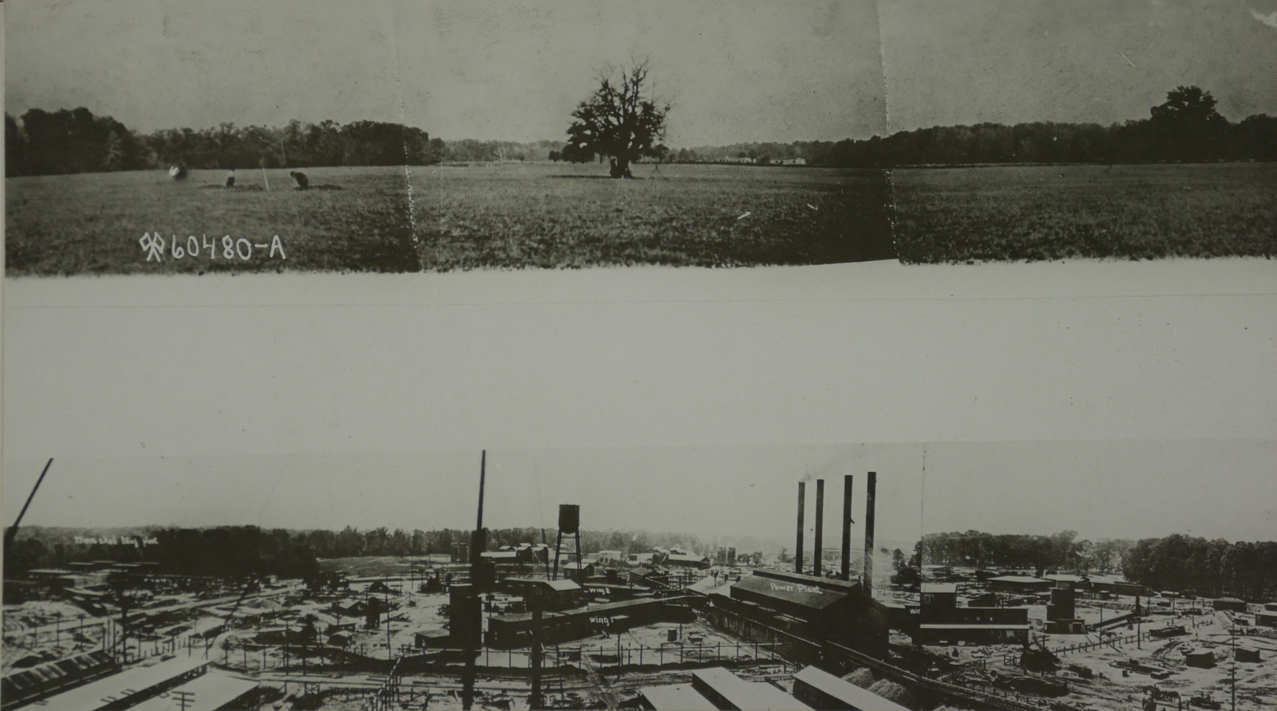 Contrasting view of Gunpowder Neck and Edgewood Arsenal from same vantage point at the war's end. (National Archives, photo no. 111-SC-60480-A)
Contrasting view of Gunpowder Neck and Edgewood Arsenal from same vantage point at the war's end. (National Archives, photo no. 111-SC-60480-A)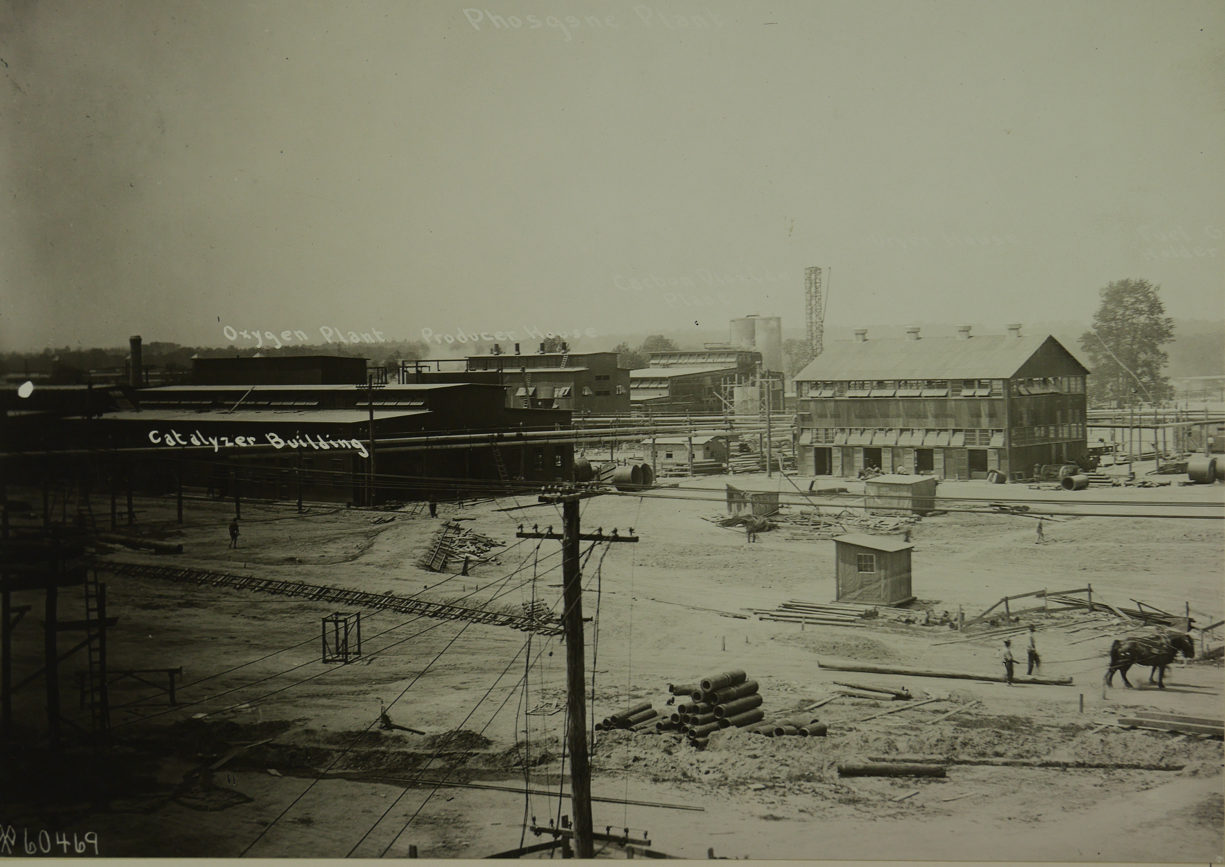 View of the phosgene plant at Edgewood Arsenal, taken June 17, 1918. (National Archives, photo no. 111-SC-60469)
View of the phosgene plant at Edgewood Arsenal, taken June 17, 1918. (National Archives, photo no. 111-SC-60469)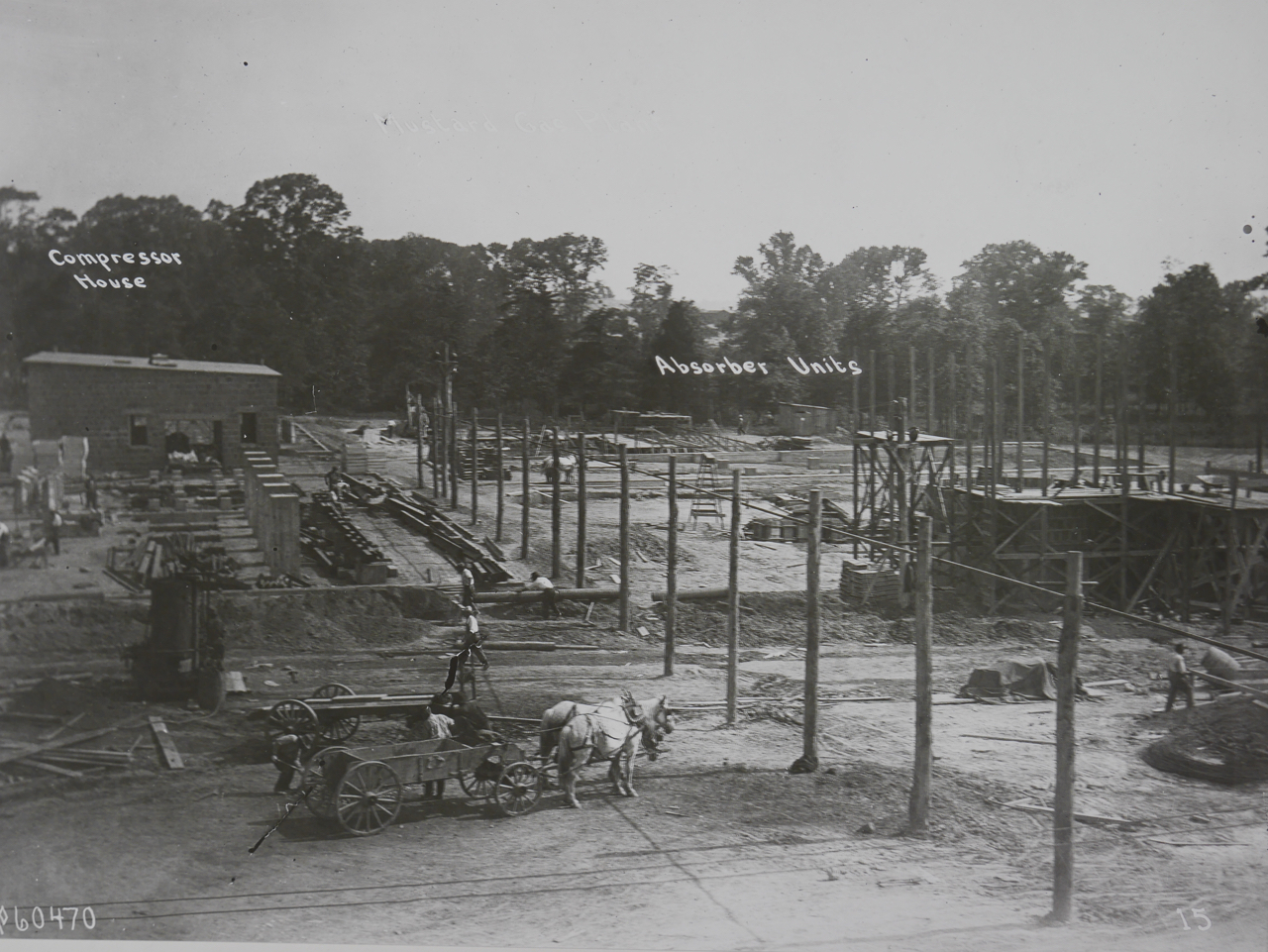 View of future mustard plant site at Edgewood Arsenal. (National Archives, photo no. 111-SC-60470)
View of future mustard plant site at Edgewood Arsenal. (National Archives, photo no. 111-SC-60470)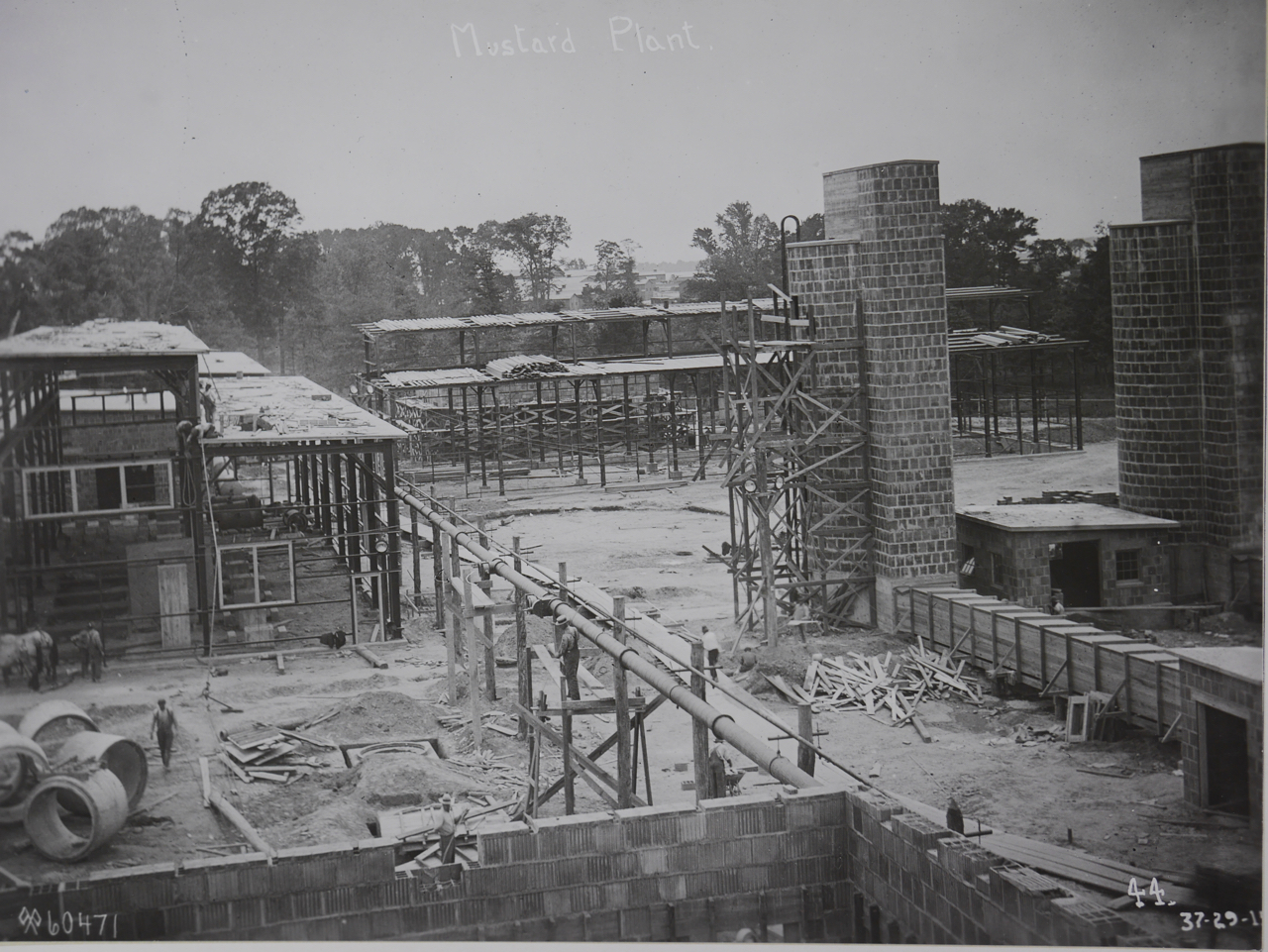 View of construction on mustard plant at Edgewood Arsenal, taken July 10, 1918. (National Archives, photo no. 111-SC-60470)
View of construction on mustard plant at Edgewood Arsenal, taken July 10, 1918. (National Archives, photo no. 111-SC-60470)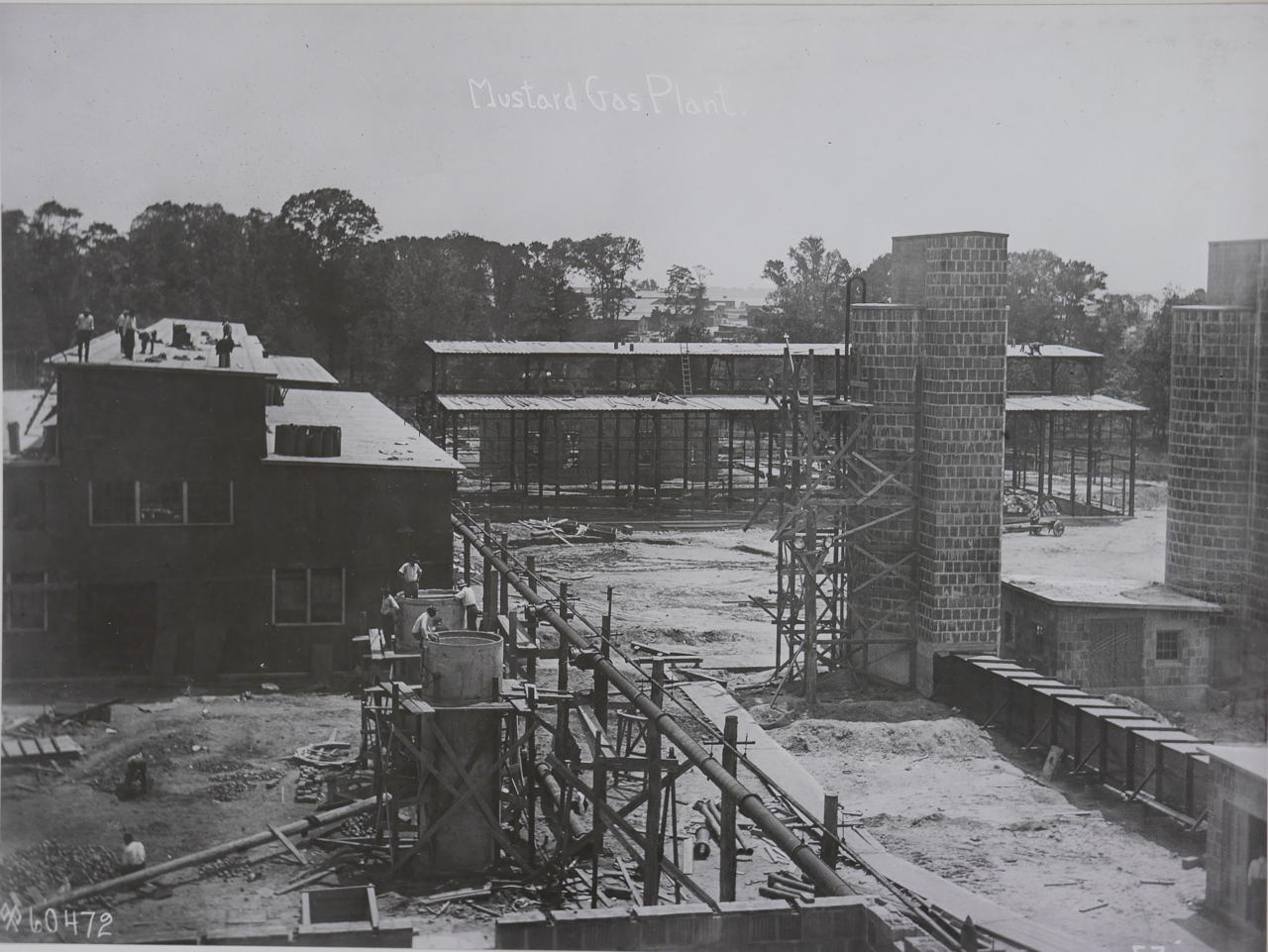 View of construction on mustard plant at Edgewood Arsenal. (National Archives, photo no. 111-SC-60471)
View of construction on mustard plant at Edgewood Arsenal. (National Archives, photo no. 111-SC-60471)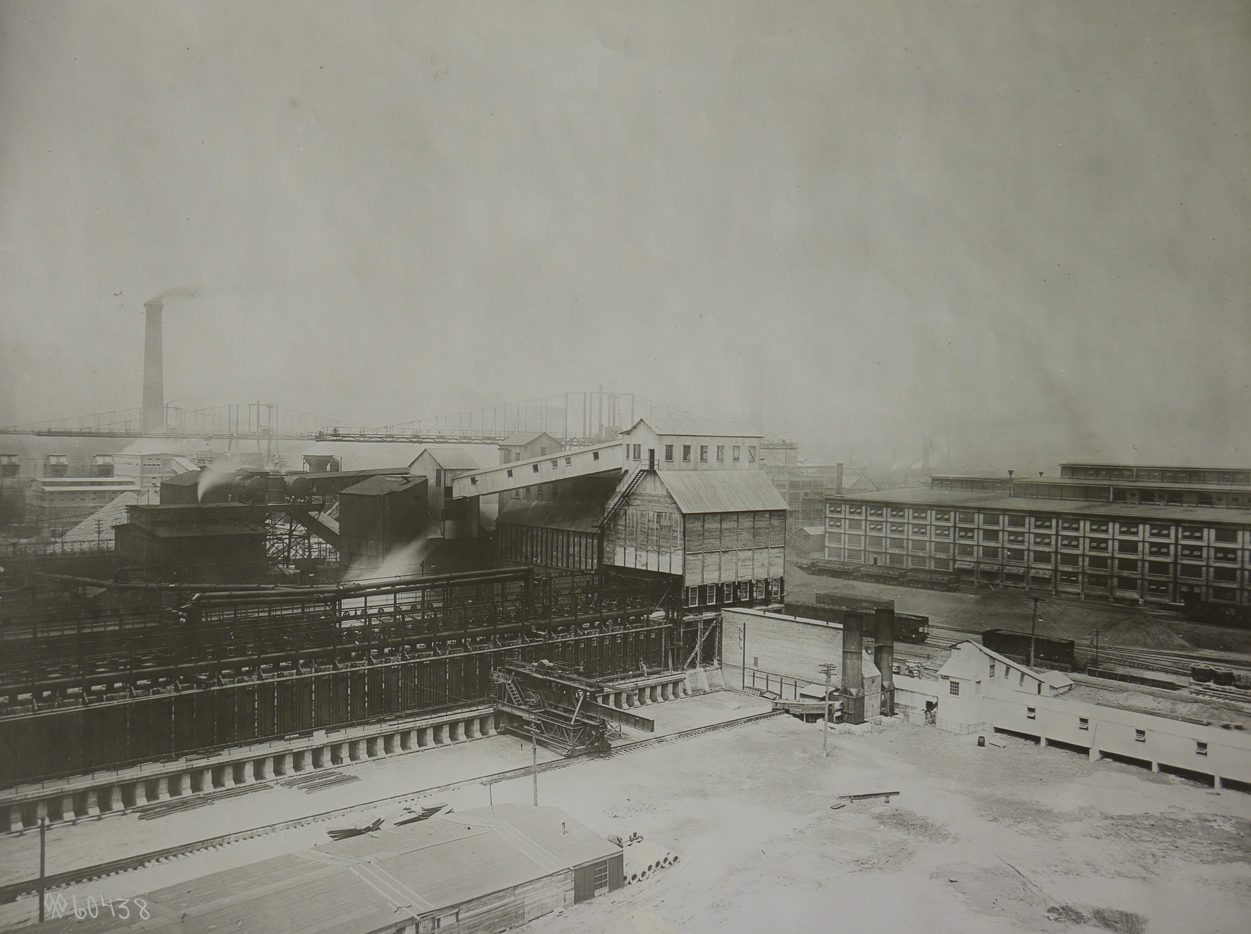 General view of Edgewood Arsenal. (National Archives, photo no. 111-SC-60438)
General view of Edgewood Arsenal. (National Archives, photo no. 111-SC-60438)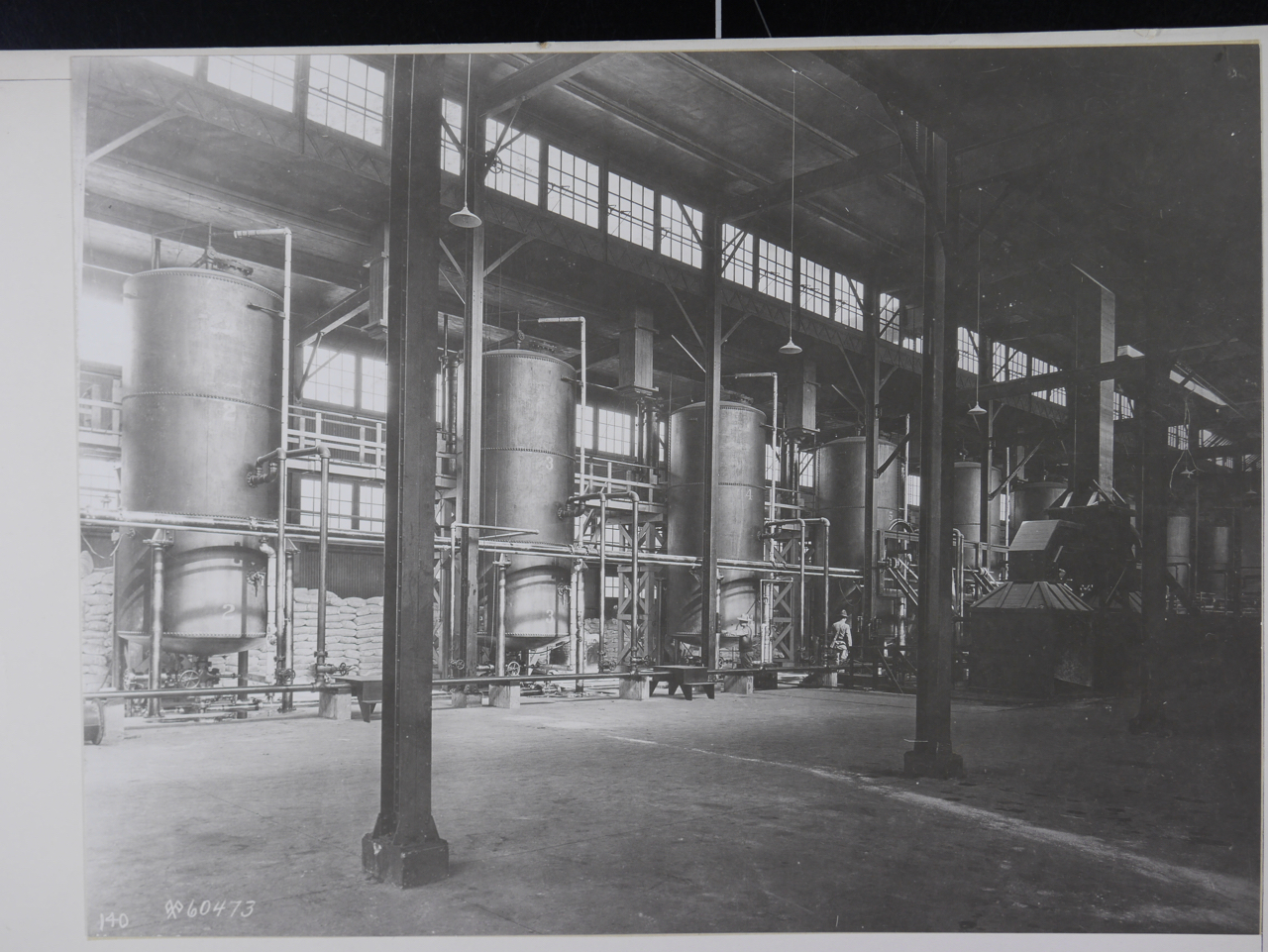 Inside of one of the Edgewood gas manufacturing plants. (National Archives, photo no. 111-SC-60,473)
Inside of one of the Edgewood gas manufacturing plants. (National Archives, photo no. 111-SC-60,473)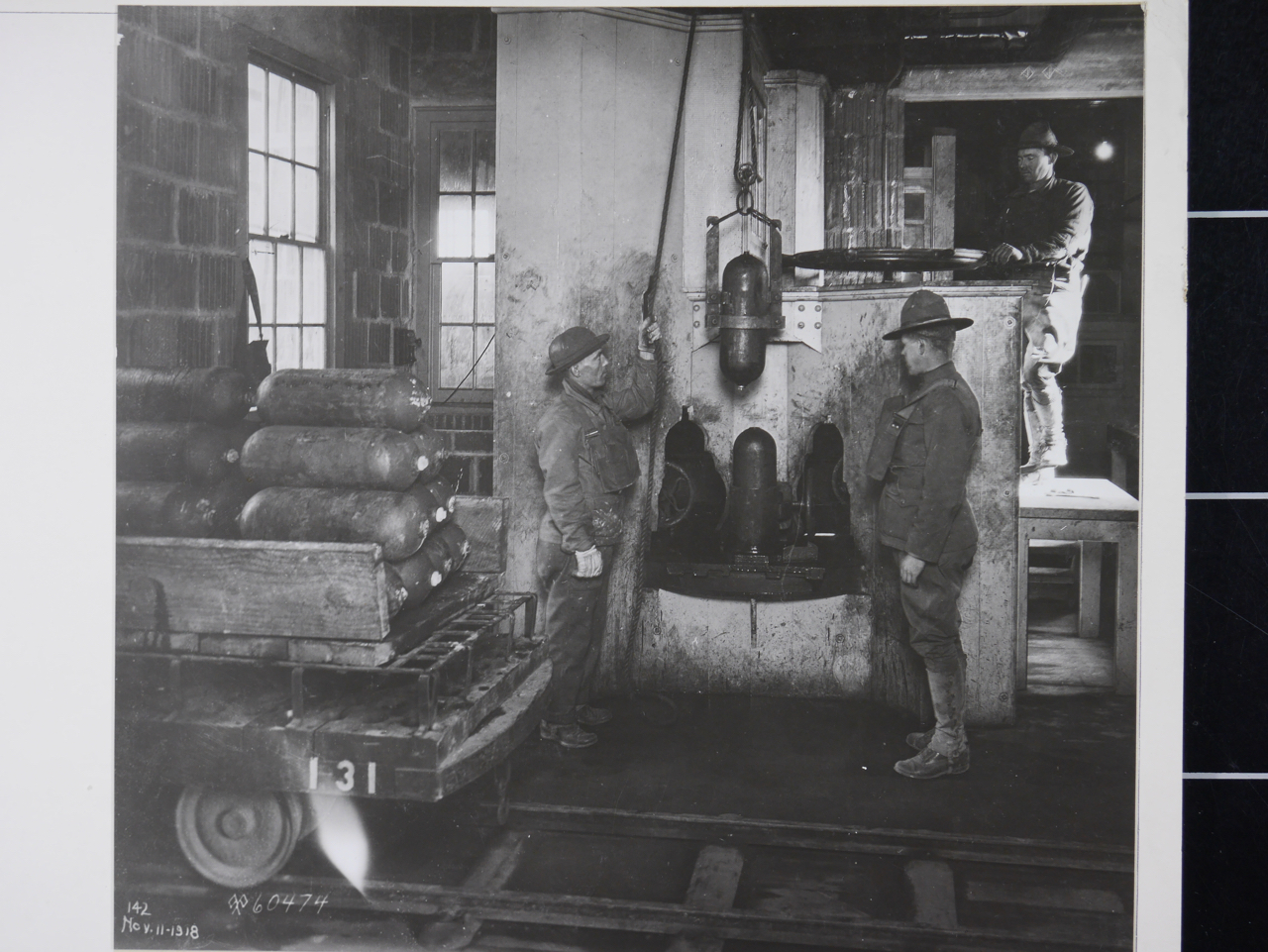 Photo taken on the date of the Armistice, Nov. 11, 1918, inside the Edgewood Arsenal shell-filling plant. The photo is presumably staged, as none of the men are wearing masks or protective gear. (National Archives, photo no. 111-SC-60474)
Photo taken on the date of the Armistice, Nov. 11, 1918, inside the Edgewood Arsenal shell-filling plant. The photo is presumably staged, as none of the men are wearing masks or protective gear. (National Archives, photo no. 111-SC-60474)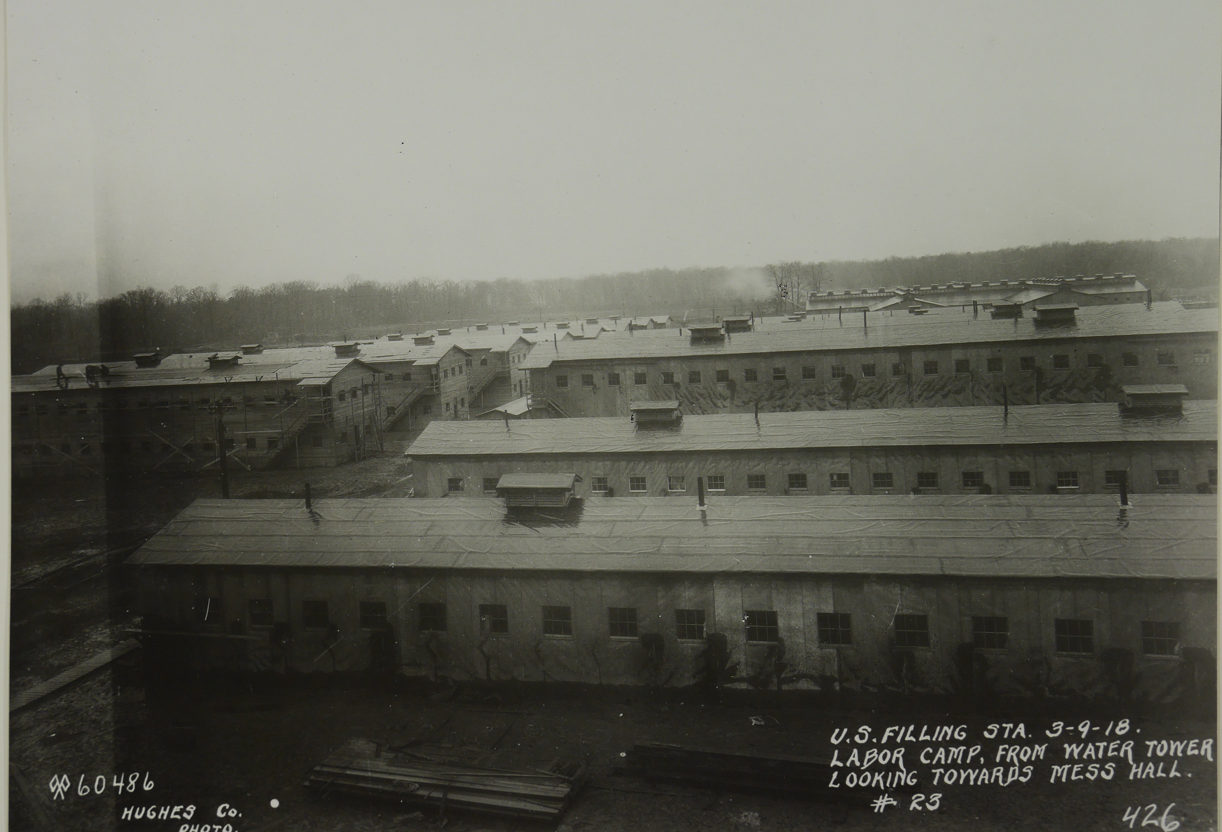 Dated March 9, 1918, photo is labeled "U.S. Filling Sta. Labor Camp," taken from water tower. (National Archives, photo no. 111-SC-60486)
Dated March 9, 1918, photo is labeled "U.S. Filling Sta. Labor Camp," taken from water tower. (National Archives, photo no. 111-SC-60486)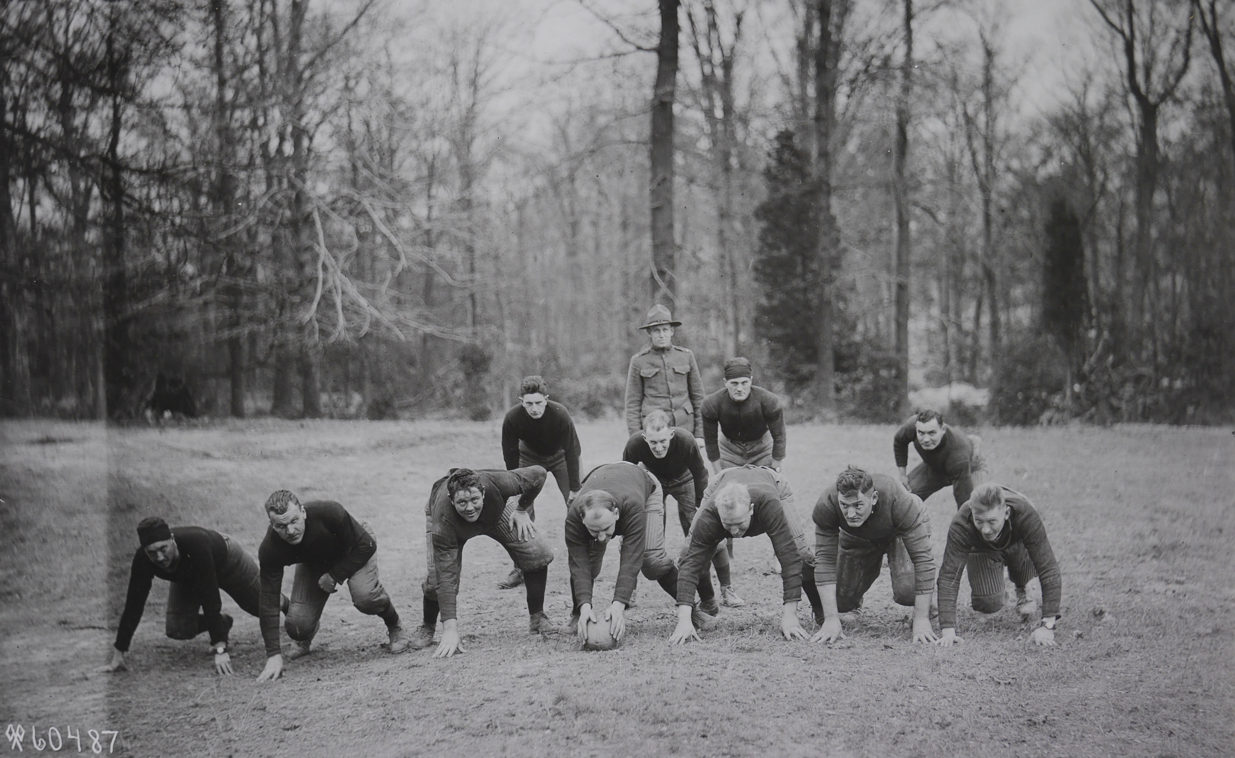 The Edgewood football squad. (National Archives, photo no. 111-SC-60487)
The Edgewood football squad. (National Archives, photo no. 111-SC-60487)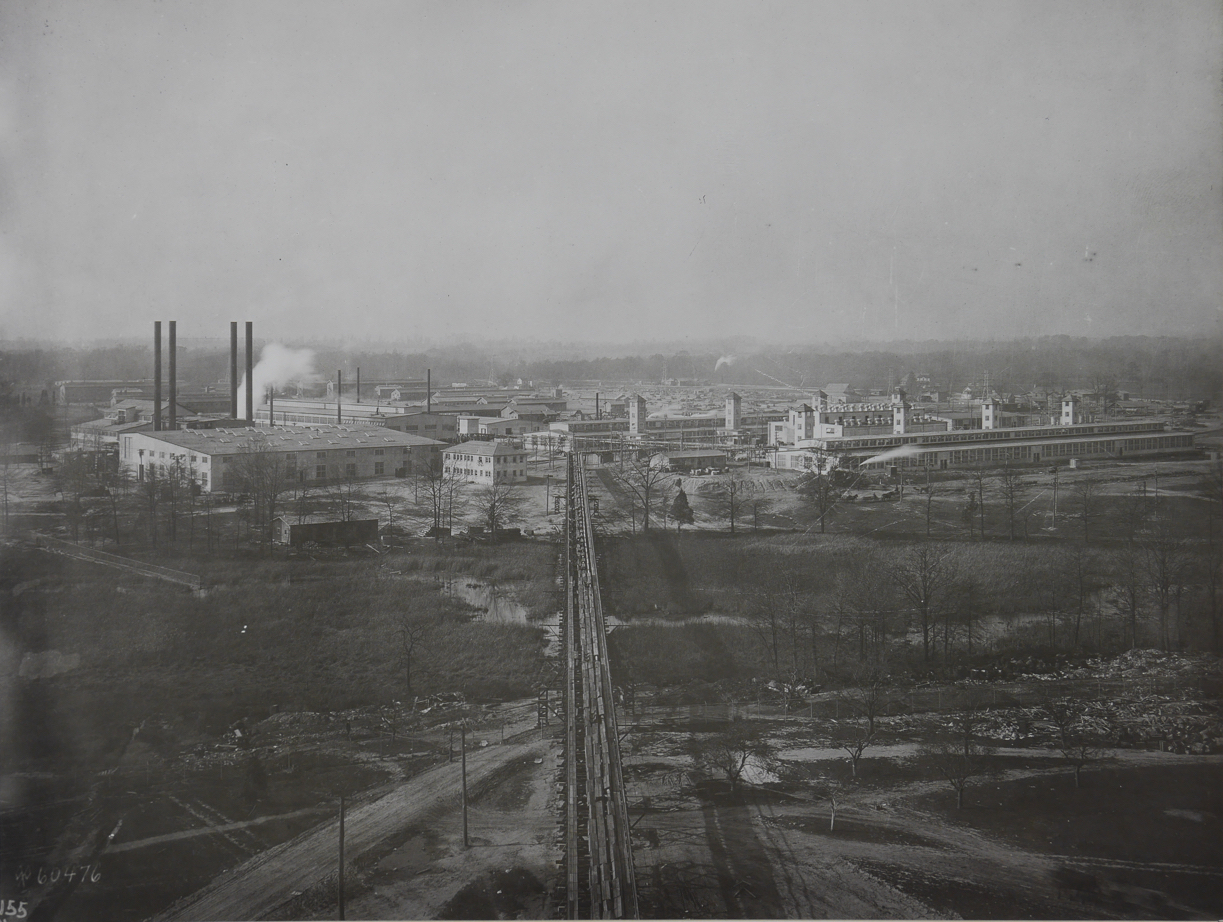 Aerial view of Edgewood Arsenal in 1918. The War Department spend about $35 million on Edgewood, a toxic boomtown where more than 11,000 people worked for the Chemical Warfare Service. (National Archives, photo no. 111-SC-60476)
Aerial view of Edgewood Arsenal in 1918. The War Department spend about $35 million on Edgewood, a toxic boomtown where more than 11,000 people worked for the Chemical Warfare Service. (National Archives, photo no. 111-SC-60476)